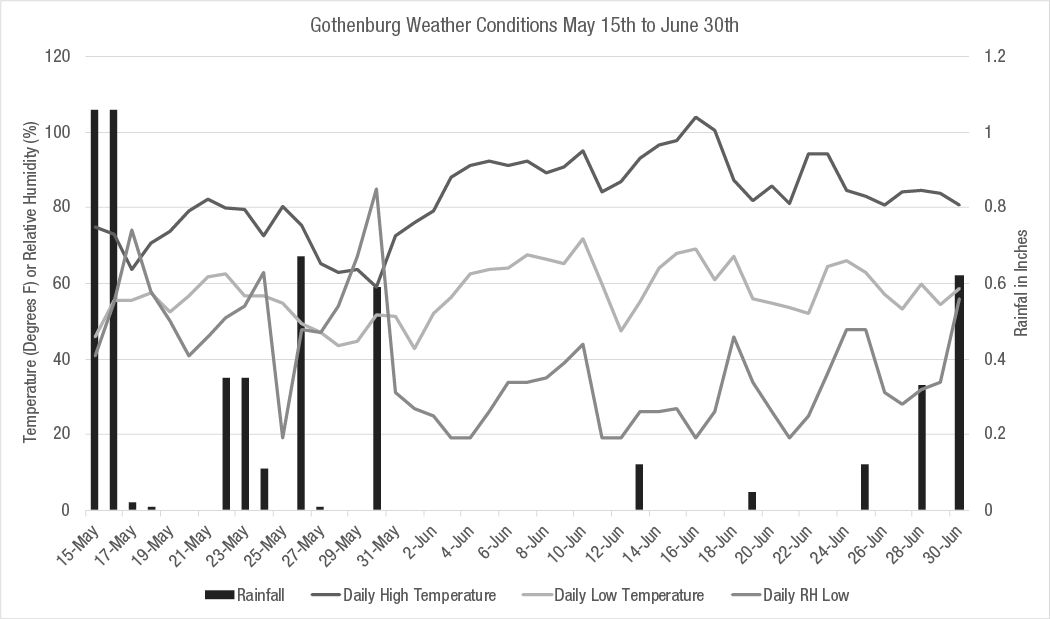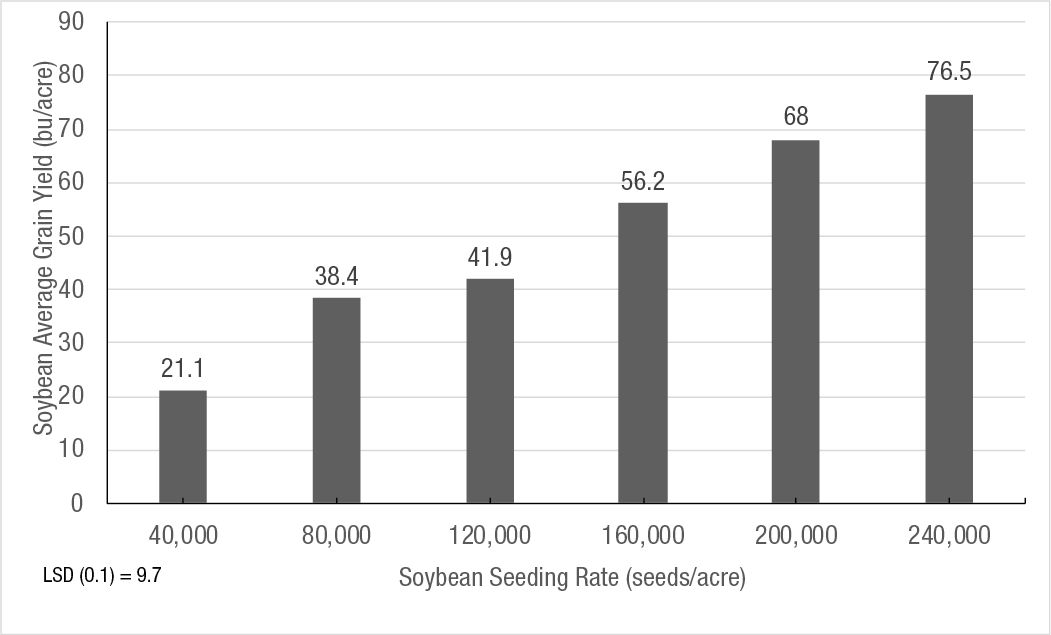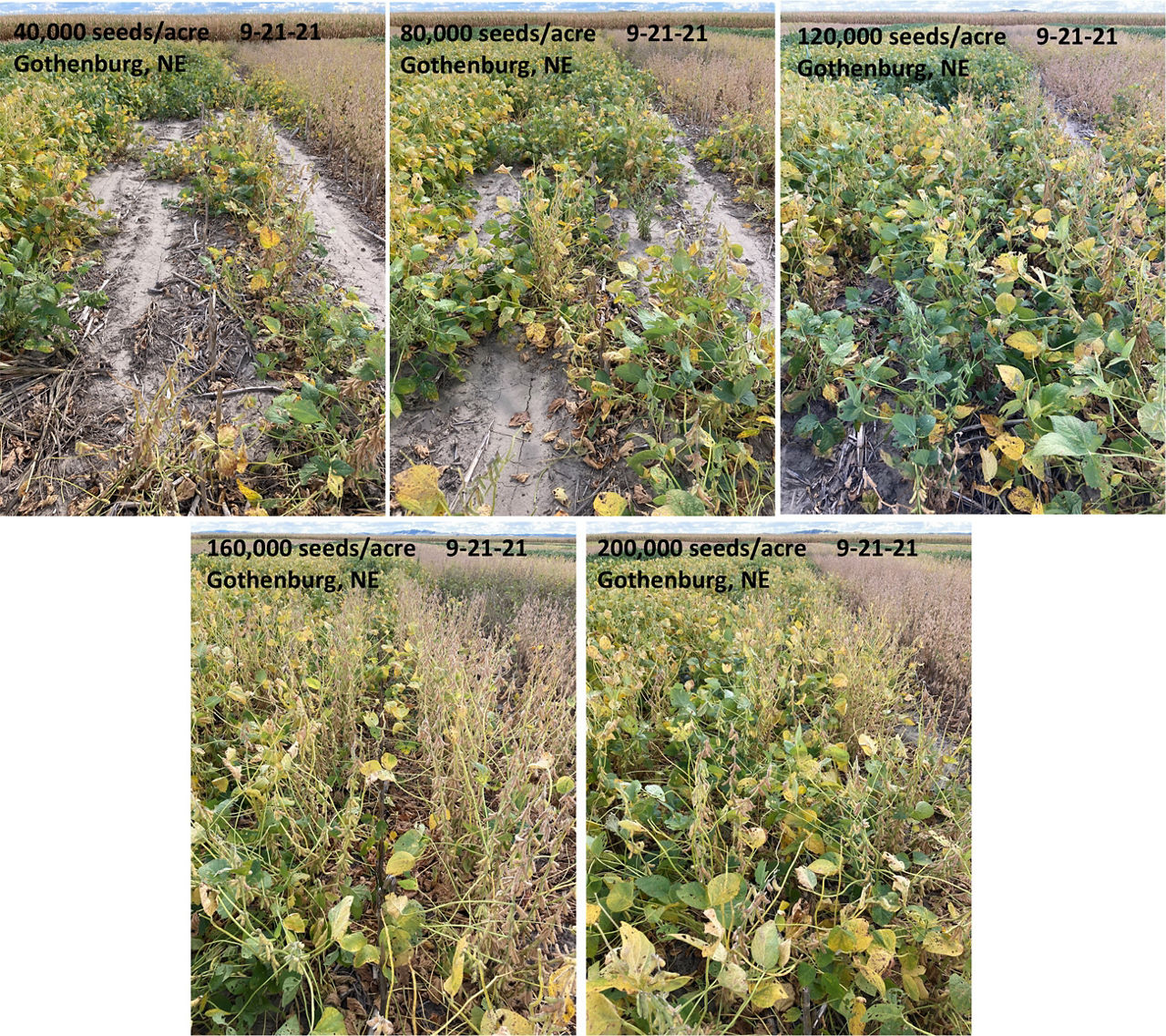7 MIN READ
Influence of Soybean Seeding Rate when Planted into Wet Soil Conditions
December 16, 2021
Trial Objective
- Tough, wet soil conditions where the ground has excessive moisture at planting followed by dry conditions can cause soil crusting occasionally during the spring. This challenging environment can cause difficulty in obtaining a consistent soybean stand.
- The objective of this study was to determine the potential benefits of increasing soybean seeding rates to increase stand establishment and subsequent yield potential in challenging, wet field conditions.
Experiment/Trial Design
| Location | Gothenburg, NE |
| Soil Type | Hord silt loam |
| Previous Crop |
Soybeans |
| Tillage Type |
Strip-tillage |
| Planting Date | 5/28/21 |
| Harvest Date | 10/5/2021 |
| Potential Yield (bu/acre) |
80 |
| Seeding Rate (seeds/acre) |
See Below |
- The study used a randomized split-plot design with four replications where soybean seeding rate was the whole plot, and soybean product was the sub-plot.
- Seeding Rates (seeds/acre)
- 40,000, 80,000, 120,000, 160,000, 200,000, and 240,000
- Soybean Products
- 2.5 maturity group (MG) XtendFlex® soybean product
- 2.7 MG XtendFlex® soybean product
- 2.9 MG XtendFlex® soybean product
- The study was irrigated throughout the growing season.
- Fertilizer (lb/acre) applied through strip-tillage prior to planting included 60 lb phosphorous, 25 lb sulfur, and 0.25 lb zinc.
- Weeds were controlled uniformly across the study.
- Figure 1 provides an overview of the weather conditions prior to, during, and after planting.
- Excessive rain occurred prior to planting on May 28th. Soil conditions were wet, but planting was pushed in order to move planting along. The closing wheels on the planter may have caused some compaction over the seed furrow. After the 0.6" of rain on May 30th, minimal rainfall occurred in June. During the first half of June, daily high temperatures climbed into the 80's 90's and even low 100's with daytime relative humidity as low as 19% led to significant soil crusting over the seed furrow. Thinly planted beans had a more difficult time emerging while soybeans planted at a higher population were able to push through the crust together.

Understanding the Results
Soybean grain yield was positively impacted by increased seeding rate (Figure 2).
The 40,000 seeds/acre seeding rate resulted in the lowest average yield among the six seeding rates (Figure 2).
The 80,000 and 120,000 seeding rates/acre resulted in similar average yields which were 82% and 98% greater than the 40,000 seeds/acre rate, respectively (Figure 2).
The average yield in the plots with the 160,000 seeds/acre rate was 46% and 34% greater than the 80,000 and 120,000 seeding rates, respectively (Figure 2).
The average yield in the plots with the 200,000 and 240,000 seeding rates/acre reached statistically similar grain yields and were 21% and 36% greater compared to the 160,000 seeds/acre rate, respectively (Figure 2).
Representative pictures (Figure 3) show the difference in the soybean stands of the 2.5 Maturity Group soybean on September 21, 2021.


Key Learnings
Higher soybean seeding rates (e.g., 200,000 and 240,000 seeds/acre) resulted in increased grain yield and should be considered when planting under tough/wet conditions in the spring. Other research from Gothenburg on soybean seeding rate indicates the optimal seeding rate would be 160,000 seeds/acre when the seed is planted in more favorable soil conditions.
- Farmers should work with their local seeds sales team members to help identify the best adapted soybean product for their production systems.
3019_R3